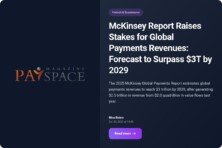Federal Reserve Chairman Jerome Powell, during a speech before the House of Representatives commission on Wednesday, March 6, said that the central bank of the United States is not yet ready to start making decisions on lowering interest rates, because, before appropriate measures, it is necessary to make sure that the final victory in the battle against inflation is achieved.

The head of the Fed also noted that in 2024, it will probably be appropriate at some point to start cutting the cost of borrowing. At the same time, he noted that so far the financial regulator is not ready to make such decisions.
Jerome Powell’s statement is similar in terms of content to numerous comments made by Fed representatives over the past few weeks. The consolidated position of the officials of the central bank and its head, expressed in the form of the mentioned comments, is that the economic system and the labor market are currently showing confident signs of strength. Against this reality, policymakers have time to strengthen confidence that the dynamic of inflation is moving towards the target by obtaining additional evidence of the existence of a corresponding tendency. Only after the growth rate of the cost of goods and services demonstrates an approach to the goal, the likelihood of which is what can be described as a high-probability scenario for the near future, the Fed will begin to ease monetary policy.
Jerome Powell, in brief remarks prepared for the House Financial Services Committee, reiterated his view that lowering interest rates would not be appropriate until there was confidence that inflation was steadily moving towards the 2% target.
The Fed chairman is on Capitol Hill for the first of two days of his semiannual monetary policy testimony. On Thursday, March 7, Jerome Powell will address the Senate Banking Committee.
Fed officials are probably currently in the final stages of an aggressive fight to contain inflation. After raising the benchmark federal funds rate by more than five percentage points starting in March 2022, they have continued to keep this indicator at a steady level since July. The tactics of the officials, which have been the main ones for them over the past six months, are due to the tendency to reduce price pressure.
It is worth noting that central banks around the world are currently considering scenarios for lowering interest rates. Financial regulators choose the most optimal options for action in the context of relevant decisions. Central banks are wary of cutting interest rates too early, but at the same time, belated steps in this direction can cause damage. American officials fear that a rapid easing of monetary policy may provoke an excessive increase in economic activity, against which the inflation rate above 2% will turn out to be a longer reality than envisaged in a positive scenario regarding the relevant issue. At the same time, prolonged retention of borrowing costs in the high range creates recession risks. Officials are also trying to avoid this scenario.
Jerome Powell suggests that interest rates are likely to peak in the current tightening cycle. He expressed a similar opinion during his last press conference, held on January 31. According to him, the continuation of the development of the United States economy within the framework of the current configuration of this process, which is assessed by officials as the most likely scenario for the near future, will form a situation appropriate for the beginning of a change in the vector of monetary policy concerning interest rates.
At the same time, Jerome Powell draws attention to the fact that the prospects for the US economic system continue to be uncertain. Against the background of the absence of what can be described in a conditional manner as a guaranteed version of the future, achieving the 2% inflation target is not an unconditional result shortly.
Currently, there is growing concern in the American banking sector about the situation financial institutions will find themselves in when loans that have been made to commercial real estate customers come due in the coming years. It is highly likely that these borrowers will not be able to repay loans on time, as demand for office space continues to fall amid the scaling tendency of remote work. Jerome Powell, commenting on this concern, said that, in his opinion, the current situation is manageable. He also said that the Fed is working to cope with this challenge. Separately, Jerome Powell stated that the central bank is monitoring lenders with a significant concentration of commercial real estate. At the same time, he noted that some banks will face losses.
Also on Wednesday, the head of the Fed was asked about Capital One’s proposed acquisition of Discover Financial Services for $35.3 billion, This deal will unite the two largest American credit card companies and will be the largest business agreement of this year to date. Rep. Maxine Waters of California, a ranking member of the House Financial Services Committee’s ranking member, asked the Fed chairman if he had an update on the central bank’s review of the merger and if there would be a hearing on the matter. Jerome Powell said that the central bank, as he believes, is in constant contact with the Justice Department about what is happening with the review of merger practices. It is expected that this deal will be completed at the end of the current year or in early 2025.
Price pressures have increased in the United States since December last year. Prices for services, excluding shelter and energy, are still higher than those figures that were observed before the coronavirus pandemic. At the same time, inflation in the United States dropped to 2.4% in the 12 months ending in January. The peak of this indicator was recorded in June 2022. At that time, inflation was 7.1%.
Demand for workers remains high in the United States. In January, employers added 353,000 jobs. Last month, the layoff rate was 2.1% of total employment. This is the lowest figure since August 2020. The relevant data was published on Wednesday by the Bureau of Labor Statistics. In January, according to preliminary information, 8.86 million jobs were available in the United States. In December, this figure was 8.89 million.
Fed officials say that high-interest rates will continue to have an impact on the state of the economic system. This factor may slow down growth, which has shown resilience over the past year, which came as a surprise to many analysts. Currently, experts are spreading the opinion that in the first quarter of 2024, the United States economy may become more active due to expectations of an increase in consumer spending.
Policymakers reacted to the mentioned sudden resilience by saying that interest rates would continue to be high. According to them, the decline in this indicator is likely to be slow and less regular than in the past.
Fed officials have consistently refuted claims that decisions on monetary policy easing will be made at a meeting of the financial regulator, which will be held on March 19-20. Investors expect the first interest rate cut to occur in June. In their opinion, three to four relevant decisions will be made this year. These expectations correspond to the average forecast of Fed officials, released at the end of last year.
Democratic lawmakers are showing increasing impatience with the actions of the central bank of the United States ahead of the November presidential elections. Sherrod Brown, chairman of the Senate Banking Committee, urged the Fed to lower interest rates in early 2024 in a letter to Jerome Powell dated January 30, noting that the high level of relevant indicators harms small businesses and worsens the financial situation of households.
As we have reported earlier, IMF Chief Says About Advantage of Late Fed Rate Cuts.









